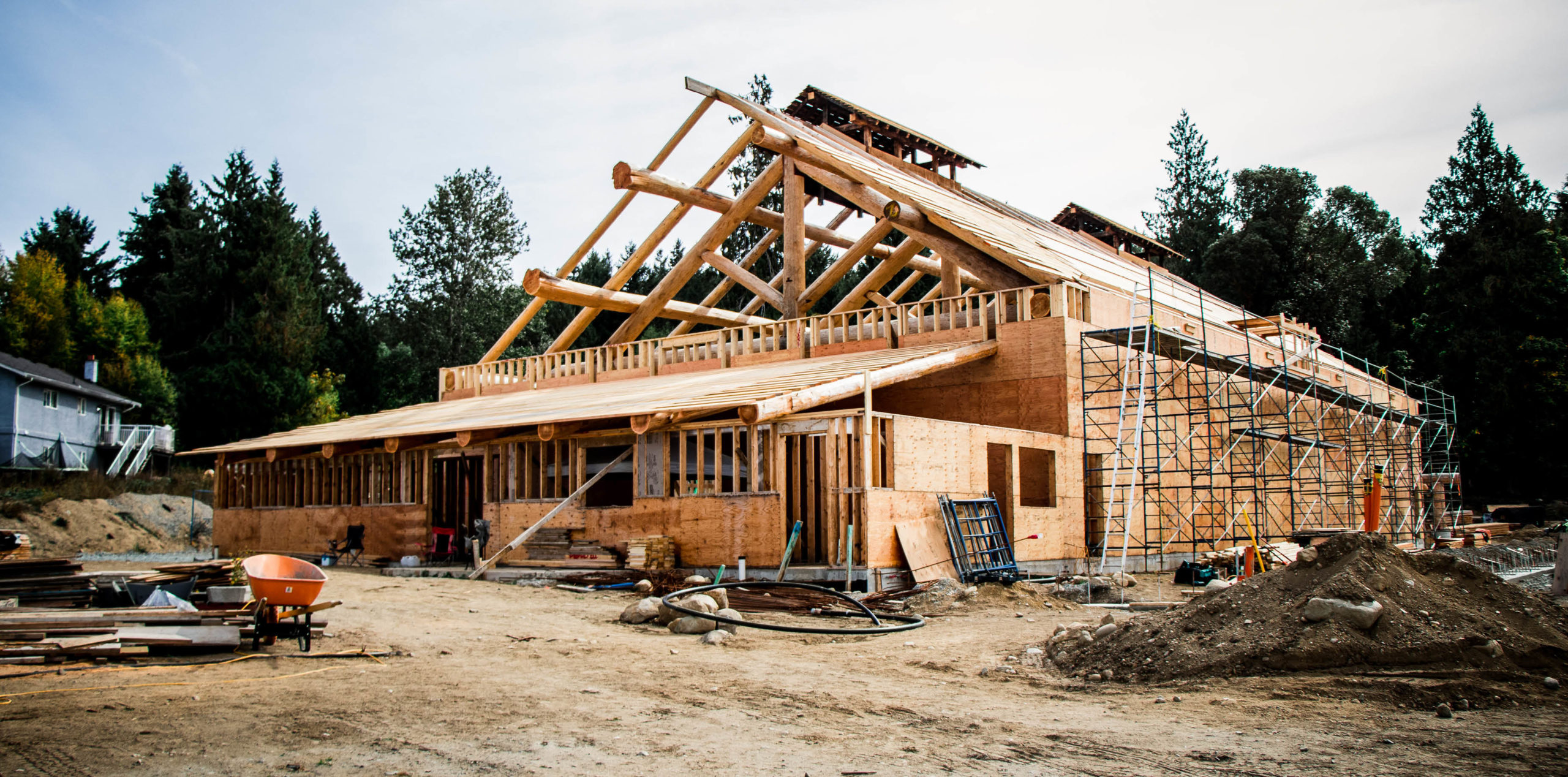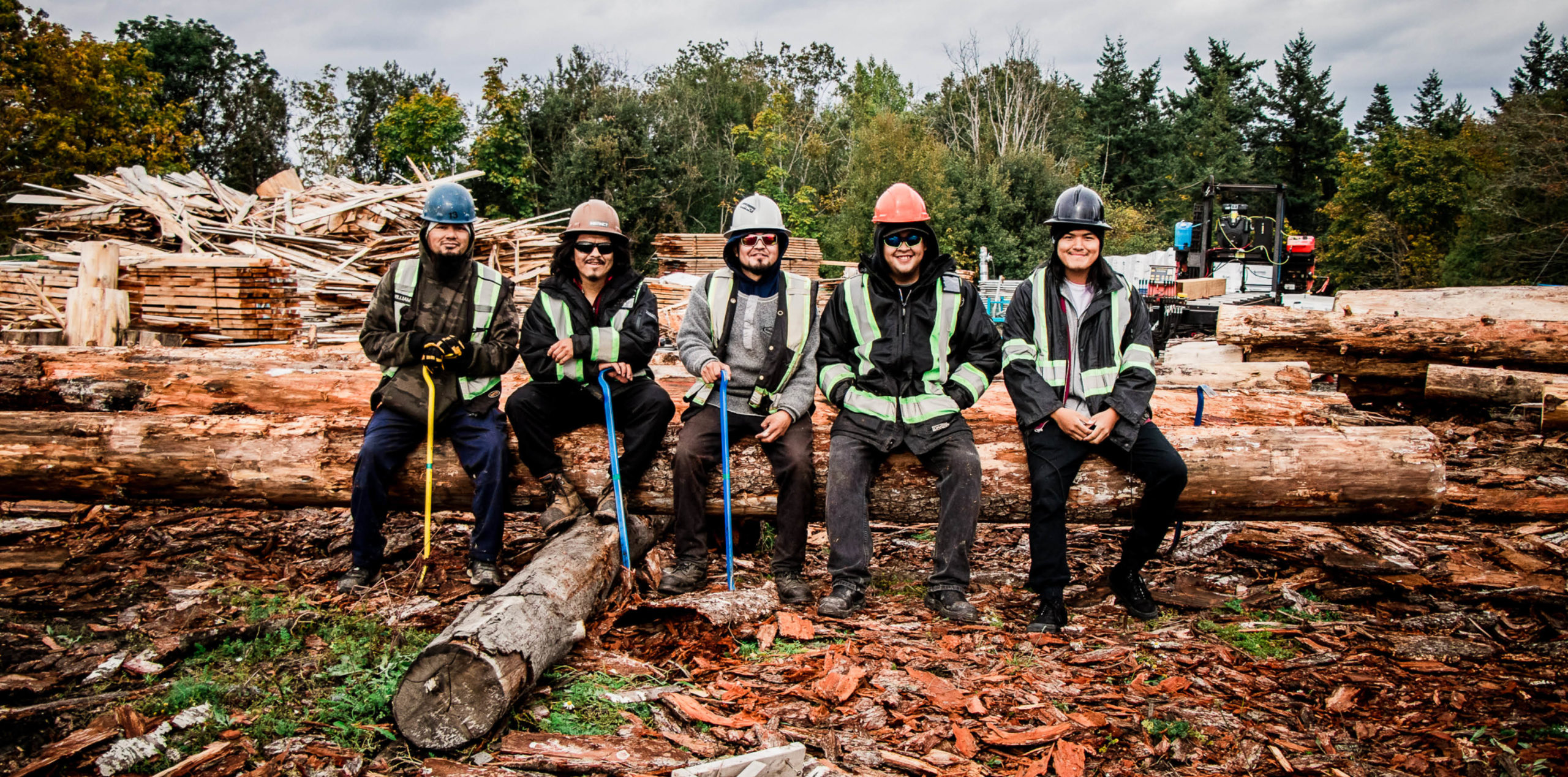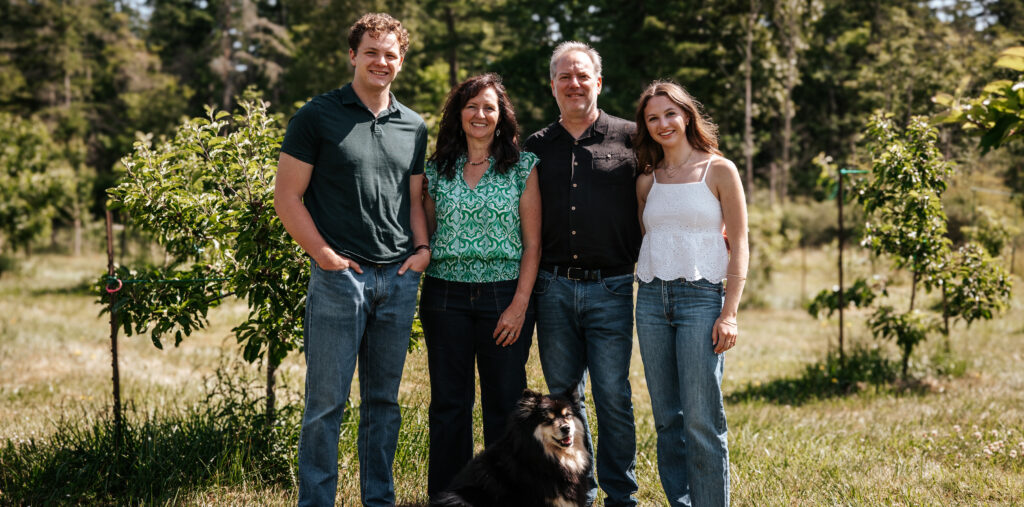by Brooklyn Cribdon | photos by Amanda Cribdon Photography
July 17, 2009: This was the last time the SȾÁUTW̱ (Tsawout, pronounced “say-out”) Nation had a gathering place. On a Friday evening in 2009, a fire engulfed the Nation’s Longhouse, with flames visible across the Peninsula, and left nothing but ashes and bits of steel in its wake. One resident, concerned for the safety of others, tried to open the door to the longhouse and ensure no one was trapped. Thankfully, no one was inside or badly hurt. Where wounds arose, however, was in the hearts of the Nation – in the souls of the people. No longer did Tsawout people have a place for ceremony, teaching or healing. What was once a cultural and spiritual home suddenly became a visual reminder of heartache and loss.
SMIŁE,ÁUṮW is the SENĆOŦEN word for the bighouse. Bighouses are vital to the well-being of Indigenous nations and communities. The bighouse is a cultural and spiritual gathering place that is truly the “heartbeat of the community.” The space serves as a sacred place to share in traditions, ceremonies, marriages, funerals, and the passing of oral knowledges from Elders. Without this gathering place, culture and language are being lost – especially for the younger generations whose participation and learning are key in keeping culture and traditions alive. Not only is culture being lost, but without a longhouse, there is also harm to the community’s well-being as people have been displaced from where they once found a sense of direction and identity.
This particularly holds true for the youth and young people of the Tsawout First Nation. The longhouse is a space where young people can find refuge and release emotions, stress and sadness. They can sit with Elders and seek guidance. And importantly, they can find belonging where they aren’t alone. Participating in and witnessing ceremonies, practising SENĆOŦEN language and sharing in traditional dance and music can all provide a deep connection with meaning and purpose. While some teachings from Elders can happen at home, it is very different (and less accessible) than at the bighouse surrounded by community. As a result of the fire in 2009, Elders have been holding on to teachings and effectively been silenced for over a decade. This leaves an entire generation without a much-needed connection to their culture and the ability to learn about themselves, who they are, and where they come from.
In an emotional interview, Becky Wilson, Executive Assistant for the Raising the Bighouse project, shared the story of how close family and community members’ lives were lost shortly after the world was hit with the COVID-19 pandemic. These lives, however, were not lost to the virus but were taken instead by suicide. Additionally, not only did the community have to bear witness to the loss of some of their youth, they saw these losses happen one after the other, without the ability to mourn or heal collectively in the longhouse. Wilson, who had just experienced deaths in her family in Cowichan, was then faced with arranging funerals, holding space for others, and her own mourning for two more young souls that were now gone. The impact of a worldwide pandemic on top of a community left without a gathering place became very evident.
There is hope shining through the community though. 12 years after fire and destruction, the Tsawout community is finally witnessing the construction of a new bighouse – a place that can support the youth and the community as a whole. After the initial trauma from 2009, and the residual trauma over the last decade, there is a lot of excitement surrounding the construction, which began with a groundbreaking in November, 2020. A year later, work is progressing quickly and there is hope that the new longhouse will be completed in December this year. The construction is a combination of partnerships from Vancouver Island’s Built Contracting, as well as work from community members, including Becky Wilson’s son and nephews. “To have our community members being a part of the build is amazing and it means just that much more. I have noticed the happiness it has brought to everyone in our community and the excitement and anticipation for it to finally be done,” says Becky. Soon, those in the Tsawout community will no longer see empty land, or even hear machines working on that land, but instead hear the sounds of drums and the smell of smoke that signal the life and vibrancy of the bighouse.
There are feelings of anticipation, renewal and joy across the Tsawout First Nation as they watch the bighouse come to life, day by day. As Becky Wilson put it, “the bighouse is bringing life back to our people.” Each morning brings the community one step closer to standing together as one and no longer being deprived of culture. Rebuilding the bighouse is not only a revitalization project. It is also an act of preservation and autonomy.
If you’d like to learn more or watch an impactful video trailer about Raising the Bighouse, please visit www.tsawout.ca/bighouse. In addition to the longhouse itself, there will also be a large dining hall where folks can share in feasts and meals. The SȾÁUTW̱ Nation has a GoFundMe set up to help complete the interior of the bighouse, including the community kitchen. Becky Wilson notes that donations can also be made easily directly to the Tsawout Nation by mailing or dropping off a cheque in person. The Nation can then record these donations in the tally on their Go Fund Me webpage.





